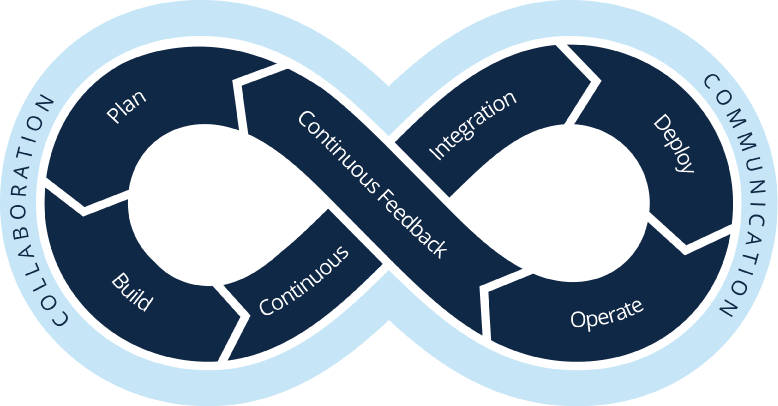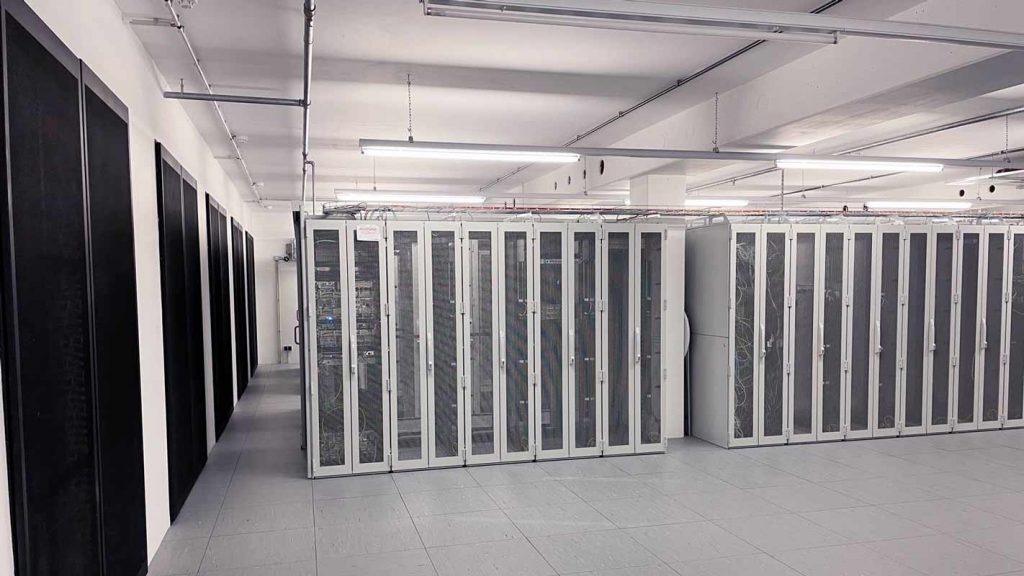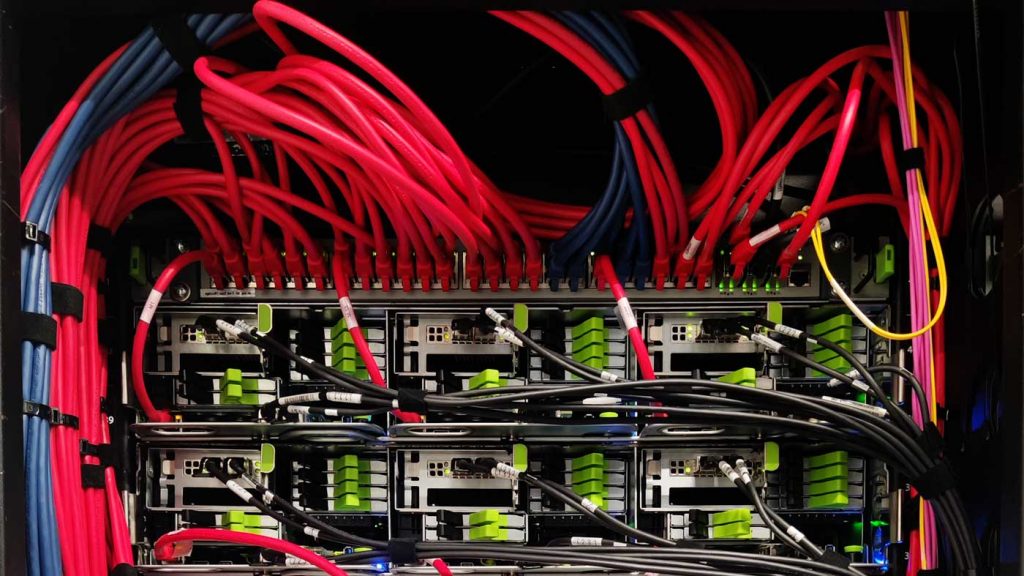Cloud computing, containerization and DevOps intertwine or are all part of a modern, agile and service-oriented IT infrastructure. The latest IaaS trend is currently Infrastructure as Code (IaC). Through IaC, the consumability of cloud resources is once again significantly simplified for users. It also optimally supports continuous integration and delivery pipelines in software development (CI/CD), enabling multiple code integrations per day. This article will take a closer look at the basics of DevOps and IaC as well as the connections between these new IaaS trends:
- Definitions: DevOps, IaC, and Managed IaC.
- IaC and DevOps
- Advantages of IaC and Managed IaC
- Conclusion
Definitions
DevOps is an approach of agile software development and means continuous development according to the principle of "end-to-end lifecycle management" from planning to production operation.
DevOps engineering augments the tasks of a system administrator with skills from software development and operations engineering to build and run applications faster, more effectively, and therefore more cost-effectively.

Typical tasks of a DevOps engineer are:
- IaaS Management
- Multi-cloud management / automation
- Continuous Integration/ Testing
- Development environments / workflow definitions
- Logging
An important aspect of DevOps is Continous Delivery (CD): Continuous Delivery makes it possible to automate release processes and thus keep the release frequency constant. CD tools are now a dime a dozen, but building pipelines takes time, and there's the added expense of maintaining and operating decentralized, distributed CD tools. As team size increases, DevOps teams need standardized solutions that are easy to access and use, but don't limit teams in their specific requirements.
Infrastructure as Code (IaC) is an approach to managing the server, storage and network infrastructure of data centers. The infrastructure of a development environment is written down as code in a descriptive model (networks, virtual machines and services, updates, patches and configurations such as load balancers and connection topologies), which is configured and provisioned via an infrastructure provisioning engine (e.g. GitLab).
IaC and DevOps
IaC is an important building block for DevOps. The code that controls the infrastructure is part of a project and is treated the same as any other code, including version control, virtualized testing and continuous monitoring. With IaC, infrastructure configuration information is stored in standardized files that can be read by software that maintains the state of the infrastructure. Operated in a Kubernetes container environment, IaC also enables isolated test environments for Continuous Integration (CI). The configuration and management associated with deploying infrastructure is greatly simplified by IaC. As "reusable code," IaC can also improve productivity and reliability by eliminating manual configuration steps. This is because traditional data center infrastructure management required manual intervention by system administrators for every configuration change. As a result, several hundred machines can be booted, configured or shut down in a matter of minutes without much additional effort. IaC tools are offered by service providers or cloud operators. Popular IaC tools include Chef, Puppet, Ansible and Terraform.
Managed Infrastructure as Code delivers scalable, standalone deployments that include automation, monitoring, and standardized processes for a continuous integration and delivery (CI/CD) pipeline. Cloud resources are thus delivered in the best possible consumable manner for agile development teams.
Advantages of IaC and Managed IaC
The use of IaC / Managed IaC offers a variety of benefits for DevOps based software development:
- Speed
- Automation
- Version control
- Efficient infrastructure and configuration management
- Templates / Reusable code
The use of existing code templates saves a lot of time, work and prevents careless errors in the development process. Instead of many manual individual steps, a process is simply set in motion that supports DevOps work processes in the best possible way. No configurations are lost. Individual versions of the installation are automatically saved and can be restored in the event of a problem.
Conclusion
Managed Kubernetes combined with Managed IaC provide DevOps teams with a low threshold of access to application-ready, scalable, CI/CD-supporting, and custom-tailored server resources. This is because IaC leverages the same concepts used to manage application code or releases for operating environments. As a key building block of DevOps, IaC combines automated testing, validation and deployment, maximizing efficiency and reducing human error by eliminating manual configuration. The use of code templates saves a lot of time and avoids errors when configuring the infrastructure. Infrastructure as Code thus enables a consistent and accelerated infrastructure build with improved management capabilities for DevOps Engineers.
IaC and Kubernetes as a managed form you can get from us test. We are happy to take the time to discuss your individual requirements.


